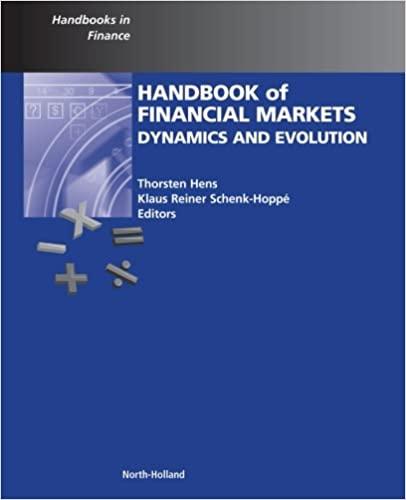Question
Question: Virus Stopper Inc., a supplier of computer safeguard systems, uses a cost of capital of 10 percent to evaluate average-risk projects, and it adds
Question:
Virus Stopper Inc., a supplier of computer safeguard systems, uses a cost of capital of 10 percent to evaluate average-risk projects, and it adds or subtracts 3 percentage points to evaluate projects of more or less risk. Currently, two mutually exclusive projects are under consideration. Both have a cost of $ 314 and will last 4 years. Project A, a riskier-than- average project, will produce annual end of year cash flows of $ 96. Project B, of less than average risk, will produce cash flows of $ 312 at the end of Years 3 and 4 only.
Answer:
The riskier-than-average project A will be evaluated using cost of capital of 13% (10% + 3%). Whereas the less than average risk project B will be evaluated using cost of capital of 7% (10% - 3%). Project A NPV = Annual Cash Inflows x Cumulative Present Value factor (13%, years 1 to 4) - Initial Cost NPV = $96 x 2.97447132552 - $314 = (-)$28.45
My question:
What did we use to calculate the Cumulative Present Value factor and receive the answer 2.97447132552?
Step by Step Solution
There are 3 Steps involved in it
Step: 1

Get Instant Access to Expert-Tailored Solutions
See step-by-step solutions with expert insights and AI powered tools for academic success
Step: 2

Step: 3

Ace Your Homework with AI
Get the answers you need in no time with our AI-driven, step-by-step assistance
Get Started


